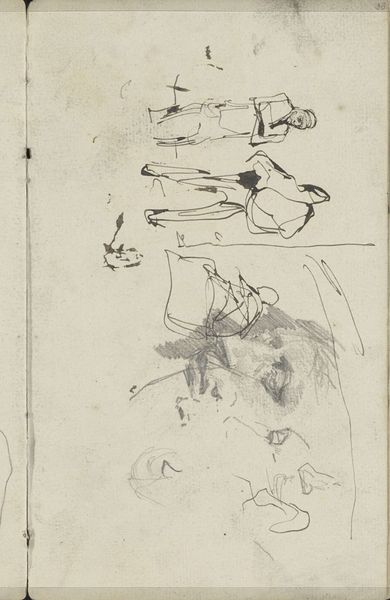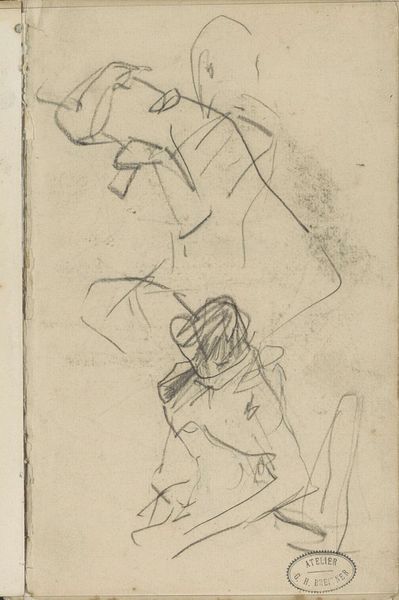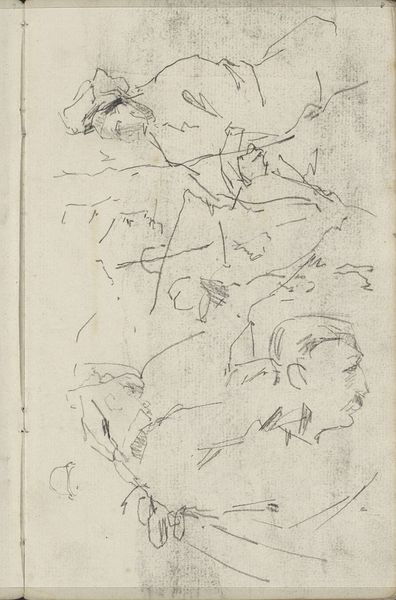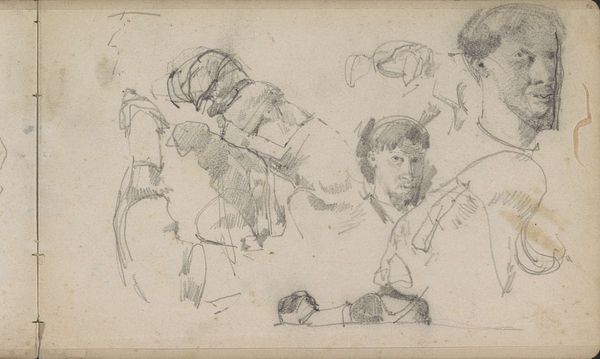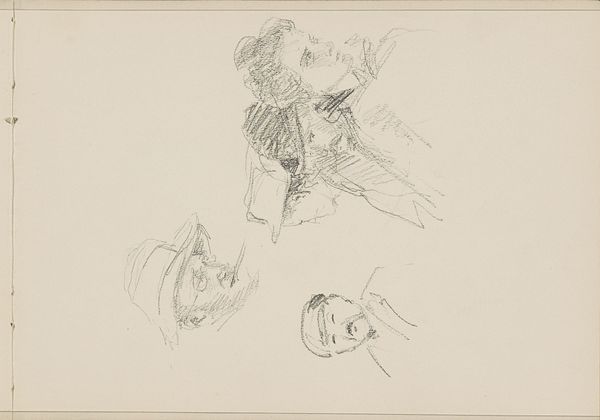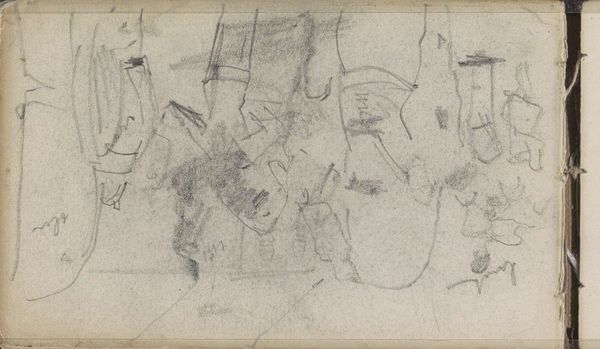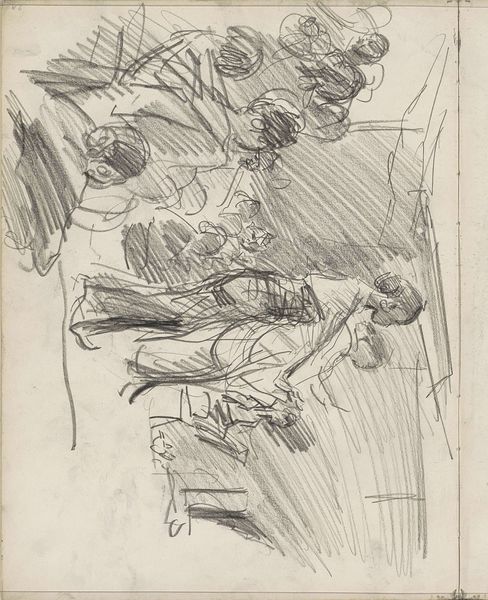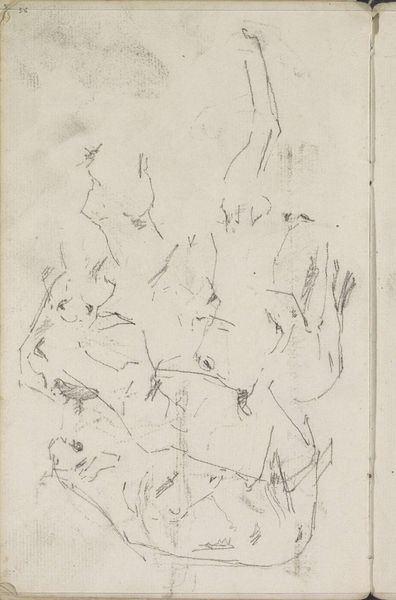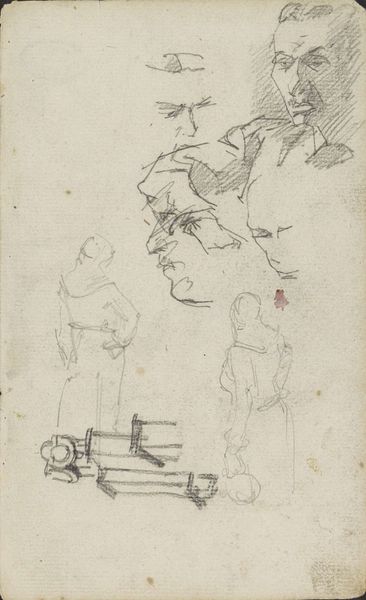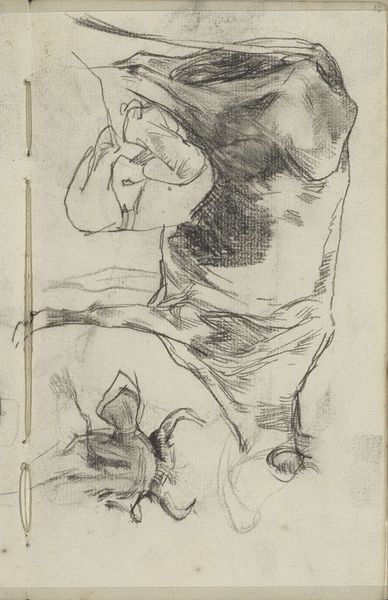
drawing, pencil
#
portrait
#
drawing
#
impressionism
#
pencil
#
realism
Copyright: Rijks Museum: Open Domain
Editor: Here we have George Hendrik Breitner’s "Mannenhoofden," a pencil drawing made between 1880 and 1882. It's currently held at the Rijksmuseum. What strikes me most is the apparent casualness, the seemingly random placement of these male heads on the page. What do you see in this piece? Curator: This drawing feels incredibly immediate, almost like peering into the artist's stream of consciousness. These faces, rapidly sketched, resonate with echoes of character studies we find throughout art history, yet the very act of massing them like this tells a more modern story, one of anonymity within urban life. Consider the symbolic weight of faces, our primary tool for recognition and emotional connection. Breitner, however, presents them almost as specimens. What feeling does this evoke for you? Editor: I think I find the image detached in its emotional presentation. The faces are like quick notations. This makes me think more about Breitner's process than his subjects' individuality. Curator: Exactly. Now consider that artistic shift, the growing detachment from the traditional, romanticized portrait in the face of burgeoning industrial society. The sheer quantity of faces and their fragmented rendering conveys a sense of being overwhelmed – a visual metaphor for modern urban existence. There are multiple cultural touchstones at play here: from academic studies, and the dawning recognition of societal changes that influenced visual vocabulary. Editor: So, it's not just about capturing likeness, but expressing the anxieties and changes of the era? Curator: Precisely! Breitner's choice to depict the individual within a collection, blurs the lines between realism and commentary. This makes it fascinating, because what at first glance seems spontaneous, can represent greater cultural feelings. Editor: I will never be able to look at sketches of this time period the same way again, especially those portraying figures. Curator: I agree, considering the symbolism offers rich avenues of thought about the history of visual culture and identity.
Comments
No comments
Be the first to comment and join the conversation on the ultimate creative platform.
